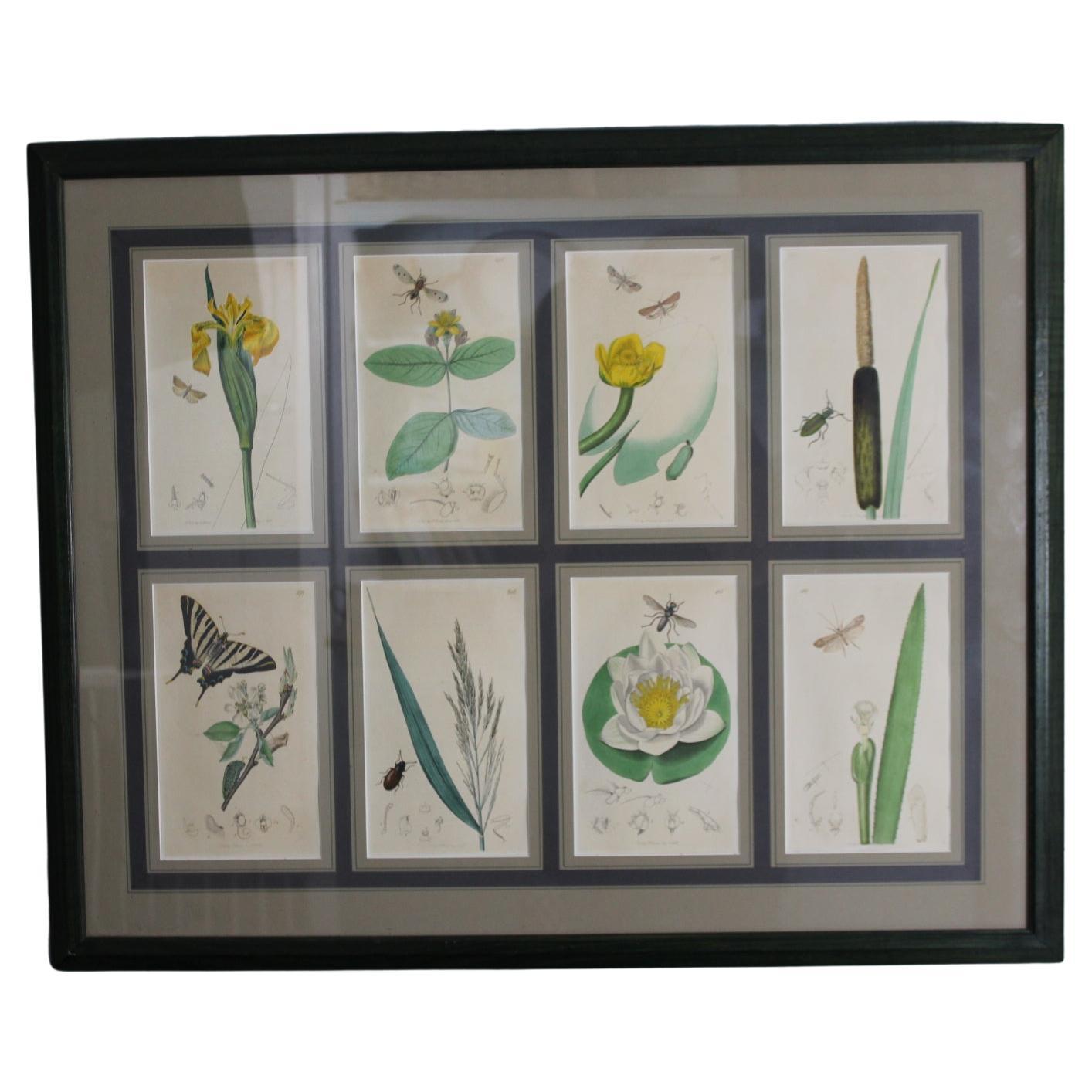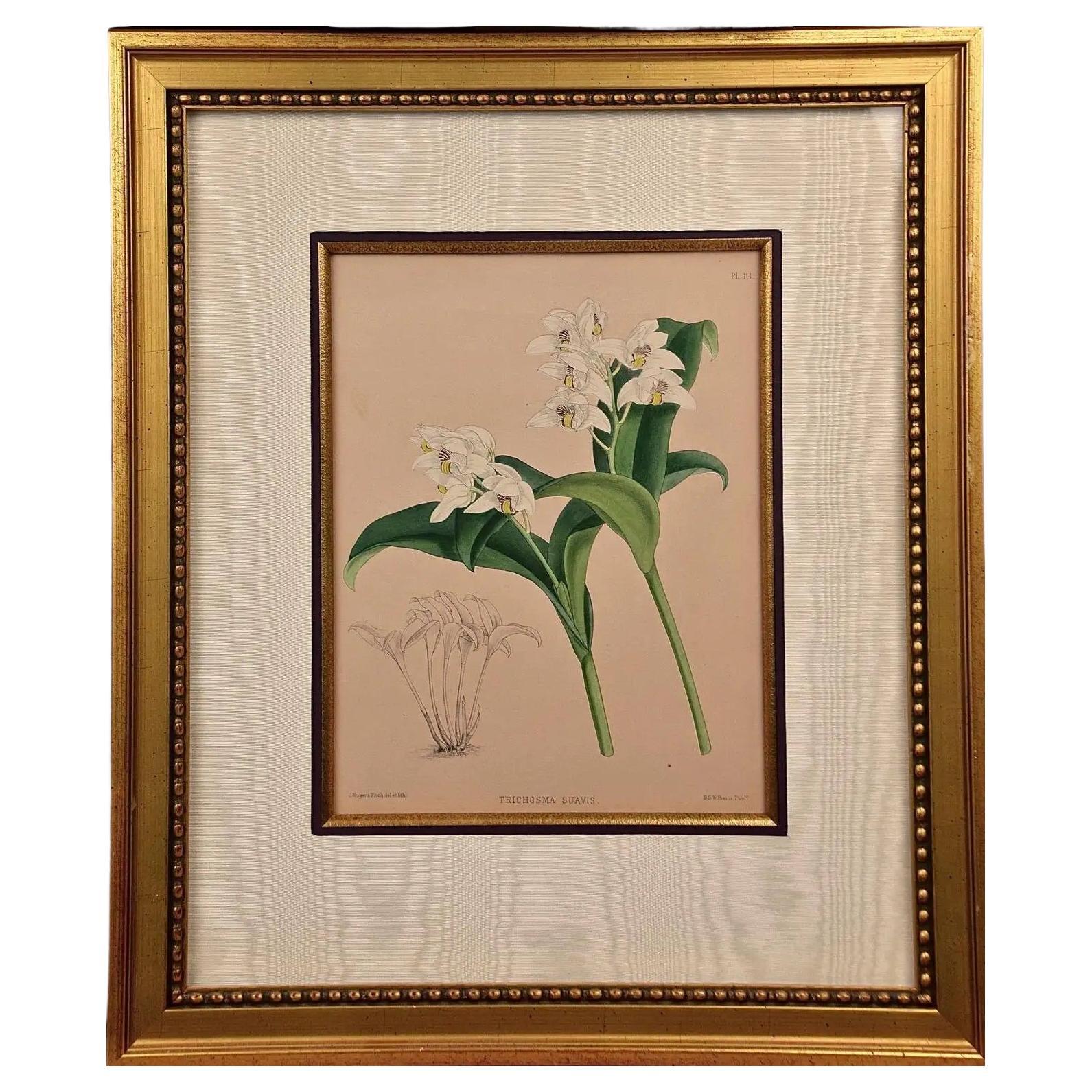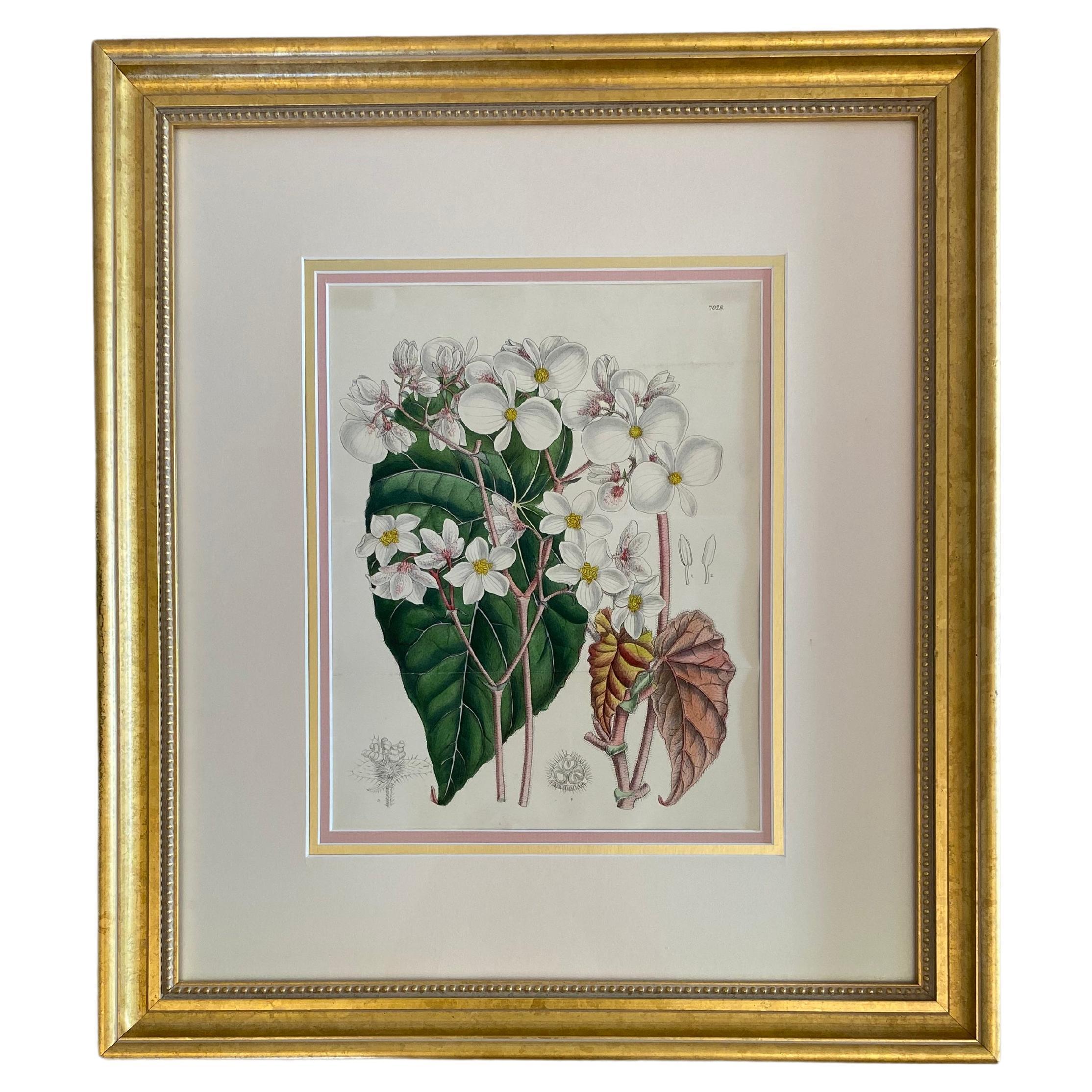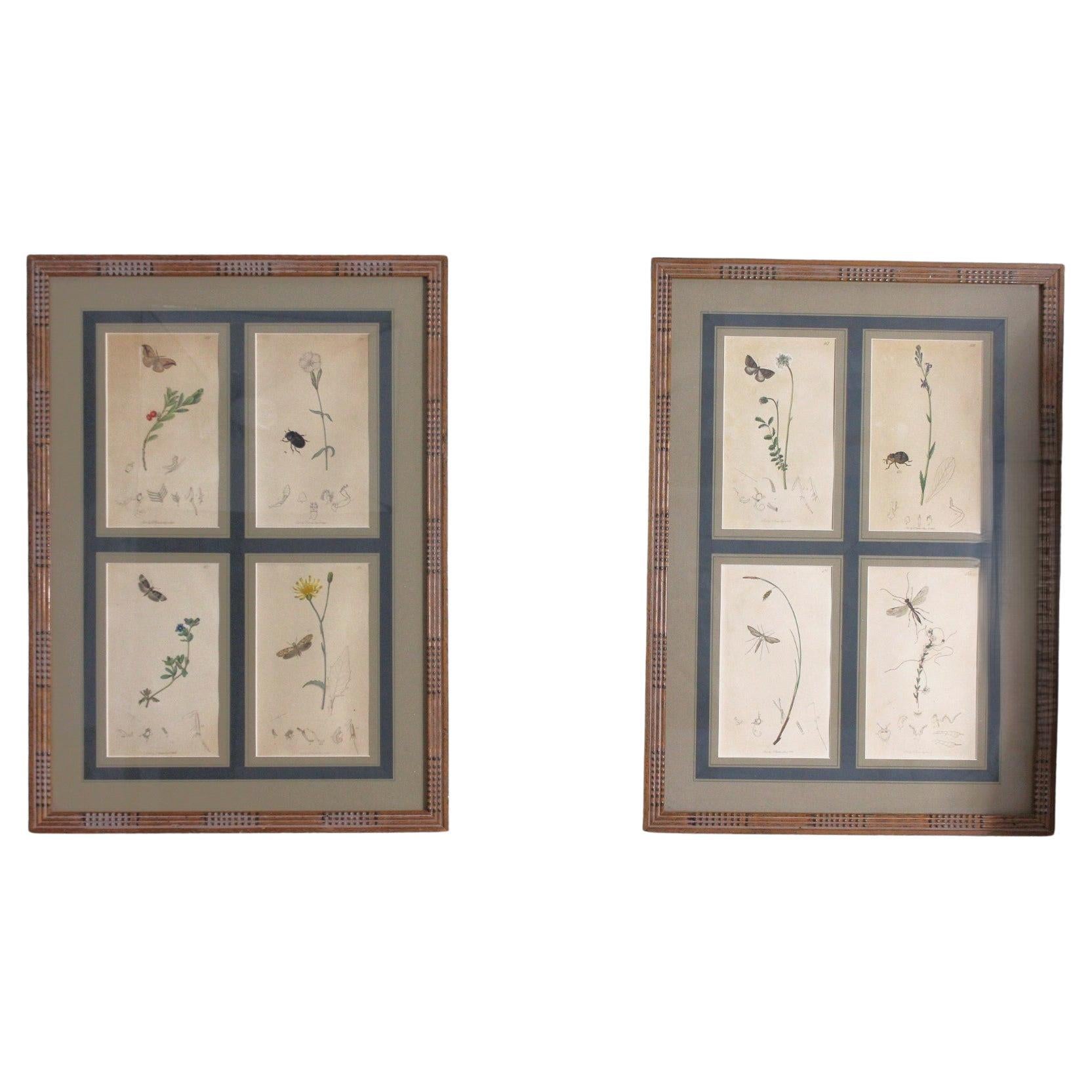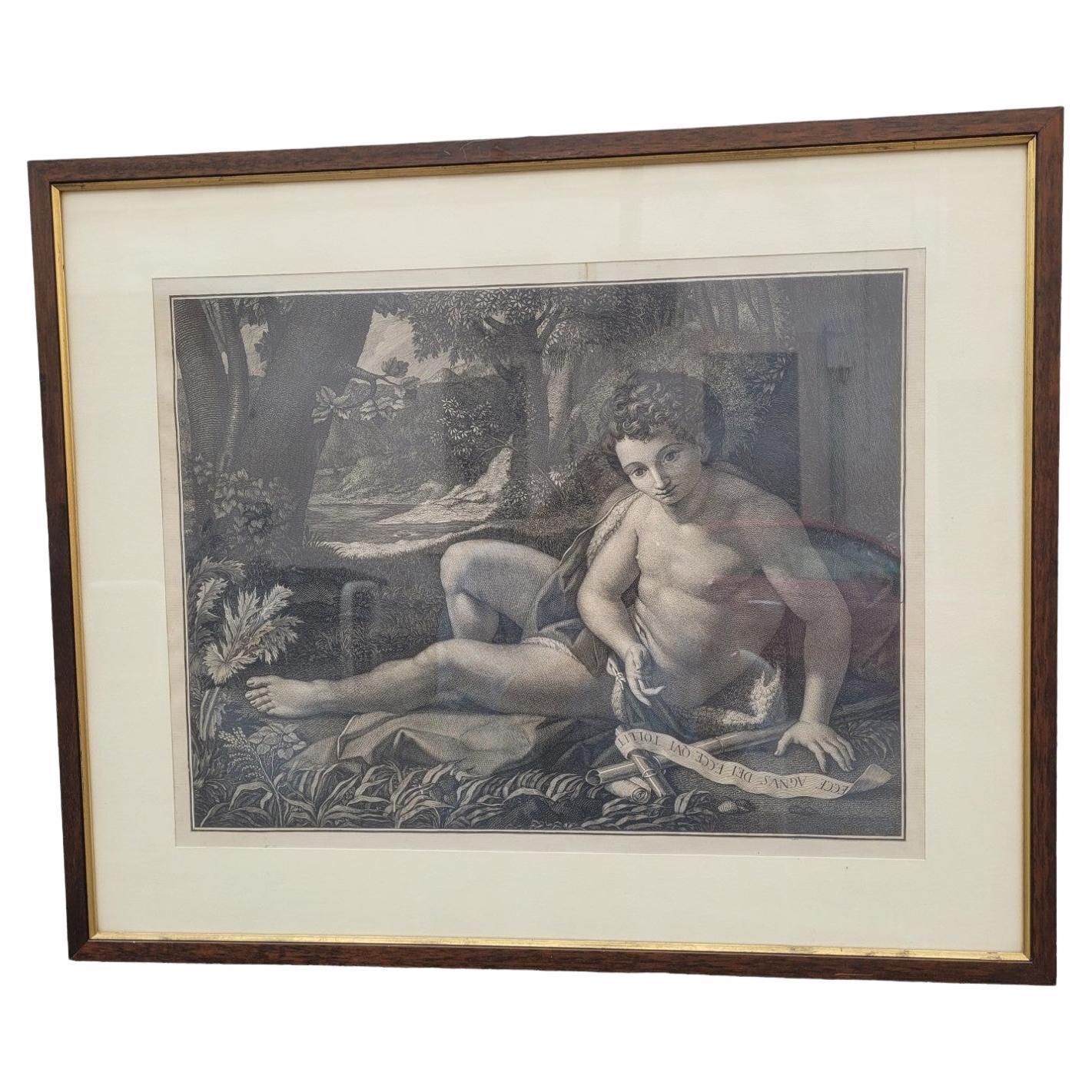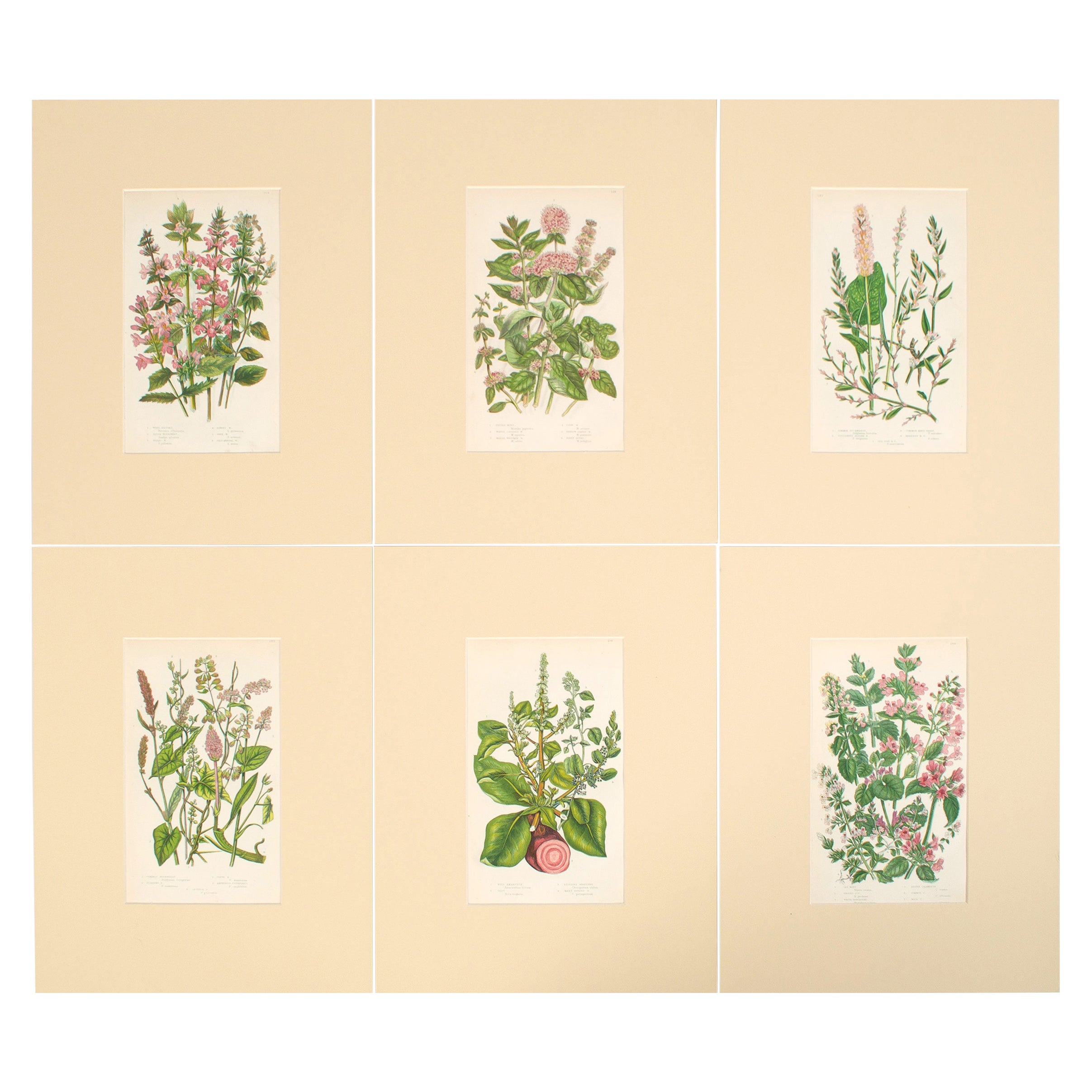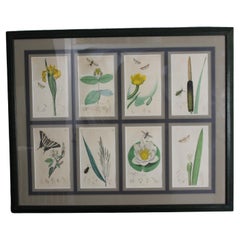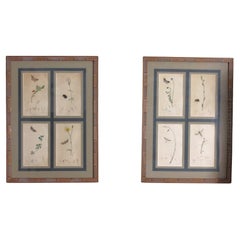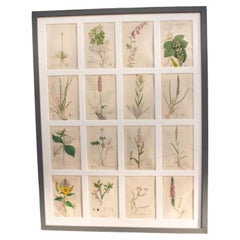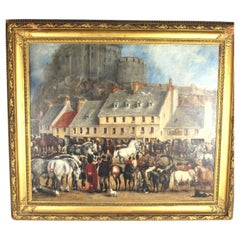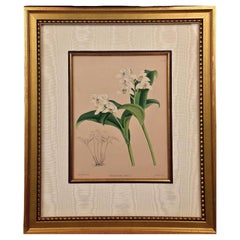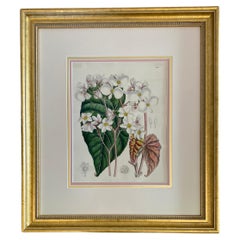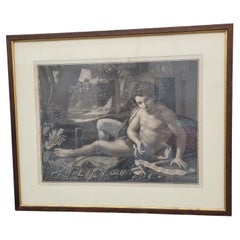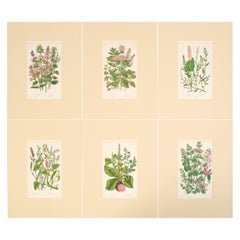Objekte ähnlich wie Botanical Engravings by John Curtis 19th century
Möchten Sie mehr Bilder oder Videos?
Zusätzliche Bilder oder Videos von dem*der Anbieter*in anfordern
1 von 11
Botanical Engravings by John Curtis 19th century
Angaben zum Objekt
19th Century Botanical Engravings: A Timeless Art Form
The Legacy of John Curtis and 19th-Century Botanical Engravings
🖋 Provenance Story – 19th Century Botanical Engravings with Insects, after John Curtis
These prints came from one of those treasure-hunt mornings — a private viewing at a longstanding dealer’s flat in Bloomsbury, stacked wall-to-wall with portfolios. In the corner, bound in archival sleeves and nearly forgotten, was a near-complete set of 19th-century botanical engravings — not just florals, but exquisite examples with entomological studies woven in: beetles nestled into petals, butterflies brushing pollen from stamens. Scientific. Romantic. Utterly mesmerising.
At the bottom of several plates was the unmistakable signature: J. Curtis. John Curtis, the renowned illustrator behind the Botanical Magazine, is a name synonymous with Victorian natural history and fine draftsmanship. His engravings — hand-coloured, scientifically meticulous — were once published to accompany botanical texts but quickly became collectable in their own right. These weren’t just records. They were declarations of awe for the natural world.
What made these particular pieces stand out was the inclusion of insects. It elevates each work, not just a study of flora, but an entire micro-ecosystem. Delicate, deeply observational, and full of movement. Each one feels like a moment captured rather than a specimen studied.
We’ve conserved them simply: mounted in minimalist, modern frames that allow the engraving to breathe — to be art, not just an archival reference. And they work anywhere. In modernist lofts, soft-toned bathrooms, layered gallery walls, or home offices that crave calm.
These are more than decorative prints. They’re time capsules of Victorian wonder — scientific elegance framed for the 21st century. For the collector, the design-lover, the nature devotee — they offer a way to anchor a space in natural history, in art, in quiet beauty.
John Curtis (1791-1862) is celebrated for his contributions to botanical art, particularly his work with 19th-century botanical engravings. In 1818, he became the principal artist of the Botanical Magazine, a prestigious publication of the era. Curtis’s detailed engravings often included both plants and insects, combining scientific accuracy with artistic beauty. His work stands as a testament to the skill and dedication required to produce these intricate illustrations.
The Art and Science of Botanical Illustrations with Insects
19th-century botanical engravings featuring plants and insects are remarkable for their detailed and vibrant depictions of nature. These illustrations were primarily created as scientific references to accompany botanical texts, yet they quickly gained popularity as decorative art pieces. Artists like John Curtis used traditional methods such as watercolour, pen, and ink to meticulously render the fine details of leaves, flowers, stems, and insects.
The inclusion of insects in these engravings added another layer of complexity, showcasing the interactions between flora and fauna. Artists paid close attention to the unique shapes, structures, and colours of their subjects, creating works that are as scientifically valuable as they are artistically stunning. These engravings provide a window into the natural world of the 19th century and continue to be cherished for their historical significance and aesthetic appeal.
Decorative Elegance: Botanical Prints in Modern Interiors
19th-century botanical engravings have transcended their original scientific purpose to become a cherished element in interior design. These timeless pieces seamlessly bridge the gap between the historical and the contemporary, offering a touch of natural elegance to modern spaces.
Enhancing Interior Spaces
Incorporating 19th-century botanical engravings into a home creates a focal point that blends history and sophistication. Their intricate designs and soft colour palettes complement various interior styles, from minimalist to industrial chic. Whether displayed as standalone pieces or arranged in a gallery wall, these prints add texture, depth, and a sense of organic beauty to any room.
Versatility Across Styles
The versatility of botanical engravings makes them suitable for diverse interior aesthetics. For instance:
In modern farmhouse interiors, they harmonise with natural materials like wood and linen.
In monochromatic or minimalist settings, they introduce a pop of colour and vintage charm.
In industrial spaces, they provide a striking contrast to raw elements like metal and concrete.
Applications in Design
Botanical engravings can be integrated into interiors in various ways:
Framed prints as wall art.
Upholstery patterns or fabric accents.
Inspirations for wallpapers or murals.
Their adaptability makes them ideal for spaces such as living rooms, kitchens, home offices, and even bathrooms, where they can bring life and character to the decor.
Timeless Appeal
Overall, 19th-century botanical engravings embody a unique blend of natural beauty, historical depth, and artistic elegance. Whether appreciated for their scientific roots or their decorative charm, these prints continue to inspire and elevate modern interiors, creating serene and inviting spaces that celebrate the harmony of art and nature.
Measurements
Width 77 cm
Height 66 cm
Condition
Very good, only very minimal age-related wear, as you would expect from the mid-19th century
Delivery
All our items will be packed with care to arrive safely to their new owners and are shipped with Track & Trace.
If you have any questions regarding an item or combined shipping, please feel free to ask.
We are happy to help you!
We kindly ask you to provide us with your phone number and email when placing your order. This will help the logistics services to locate you and give an estimated time of arrival.
We would also be delighted if you wished to make your own iries into shipping and would happily accommodate any courier of your choice.
Please note that delivery fees are based on front-door delivery. For an accurate delivery fee or any special requests or inquiries, please contact us. We look forward to hearing from you.
- Maße:Höhe: 66 cm (25,99 in)Breite: 77 cm (30,32 in)Tiefe: 5 cm (1,97 in)
- Verkauft als:Set von 8
- Stil:Viktorianisch (Aus dem Zeitalter)
- Materialien und Methoden:Papier,Graviert
- Herkunftsort:
- Zeitalter:
- Herstellungsjahr:1818
- Zustand:Geringfügiges Verblassen.
- Anbieterstandort:Seaford, GB
- Referenznummer:1stDibs: LU10376245216632
Anbieterinformationen
Neu bei 1stDibs
In den letzten sechs Monaten beigetreten.
Noch keine Bewertungen
Geprüfte*r Anbieter*in
Jede*r Anbieter*in erfüllt strenge Standards bezüglich Echtheit und Zuverlässigkeit
Gründungsjahr 2021
1stDibs-Anbieter*in seit 2025
Typische Antwortzeit: 3 Stunde
- VersandAngebot wird abgerufen …Versand von: Seaford, Vereinigtes Königreich
- Rückgabebedingungen
Einige Inhalte dieser Seite wurden automatisch übersetzt. Daher kann 1stDibs nicht die Richtigkeit der Übersetzungen garantieren. Englisch ist die Standardsprache dieser Website.
Authentizitätsgarantie
Im unwahrscheinlichen Fall eines Problems mit der Echtheit eines Objekts kontaktieren Sie uns bitte innerhalb von 1 Jahr für eine volle Rückerstattung. DetailsGeld-Zurück-Garantie
Wenn Ihr Objekt nicht der Beschreibung entspricht, beim Transport beschädigt wurde oder nicht ankommt, kontaktieren Sie uns bitte innerhalb von 7 Tagen für eine vollständige Rückerstattung. DetailsStornierung innerhalb von 24 Stunden
Sie können Ihren Kauf jederzeit innerhalb von 24 Stunden stornieren, ohne jegliche Gründe dafür angeben zu müssen.Geprüfte Anbieter*innen
Unsere Anbieter*innen unterliegen strengen Dienstleistungs- und Qualitätsstandards, wodurch wir die Seriosität unserer Angebote gewährleisten können.Preisgarantie
Wenn Sie feststellen, dass ein*e Anbieter*in dasselbe Objekt anderswo zu einem niedrigeren Preis anbietet, werden wir den Preis entsprechend anpassen.Zuverlässige weltweite Lieferung
Unsere erstklassigen Versandunternehmen bieten spezielle Versandoptionen weltweit, einschließlich individueller Lieferung.Mehr von diesem*dieser Anbieter*in
Alle anzeigenBotanical Engravings by John Curtis 19th century Set of 8
19th Century Botanical Engravings: A Timeless Art Form
The Legacy of John Curtis and 19th-Century Botanical Engravings
🖋 Provenance Story – 19th Century Botanical Engravings with ...
Kategorie
Antik, 19. Jahrhundert, Britisch, Viktorianisch, Drucke
Materialien
Papier
botanische Stiche des 19. Jahrhunderts
Paar britische Pflanzenstiche aus dem 19. Jahrhundert mit Insekten - John Curtis (1791-1862)
Verkauft als Paar - Bitte teilen Sie uns Ihre Wahl bei Ihrer Bestellung mit:
1 - Löwenz...
Kategorie
Antik, 19. Jahrhundert, Englisch, Viktorianisch, Drucke
Materialien
Papier
2.541 $ / Set
botanische Stiche von James Sowerby aus dem 18. Jahrhundert
Von James Sowerby
Seltene antike botanische Drucke von James Sowerby (1757-1822): Eine zeitlose Hommage an die britische Flora
Tauchen Sie ein in die bezaubernde Welt der botanischen Kunst des 18. Ja...
Kategorie
Antik, 1790er, Britisch, Georgian, Drucke
Materialien
Papier
Pferdegemälde des 19. Jahrhunderts
Von Rosa Bonheur
Ein seltenes Exemplar aus dem 19. Gemälde des Pferdemarktes auf dem Grassmarket, Edinburgh, Schottland
Anhängerin von Rosa Bonheur, Öl auf Leinwand
Unverwechselbare Sammlersiegel au...
Kategorie
Antik, 1860er, Britisch, Hochviktorianisch, Gemälde
Materialien
Leinwand
Dänische Schwarzschmiedeeiserne Schmiede des 19. Jahrhunderts von Edvard Petersen
Atmosphärische Schmiede Interieur von Edvard Petersen signiert mit Monogram
Dieses prächtige Gemälde aus dem späten 19. Jahrhundert, das das Innere einer Schmiede zeigt, stammt von ...
Kategorie
Antik, 1890er, Dänisch, Hochviktorianisch, Gemälde
Materialien
Leinwand, Farbe
Ölgemälde der Kathedrale von Wakefield, Yorkshire, aus dem frühen 19. Jahrhundert - John Cawthorn
Ölgemälde der Kathedrale von Wakefield, Yorkshire, aus dem frühen 19. Jahrhundert - zugeschrieben von John Cawthorn
Öl auf Leinwand John Cawthorn (Brite, aktiv in den frühen 1800er ...
Kategorie
Antik, Anfang 1800, Englisch, George III., Gemälde
Materialien
Leinwand
Das könnte Ihnen auch gefallen
John Nugent Fitch Orchideen, gerahmte, handkolorierte botanische Gravur des 19. Jahrhunderts
Von John Nugent Fitch
Diese schöne, original handkolorierte Orchideenlithografie mit dem Titel "Trichosma Suavis" Orchids von John Nugent Fitch ist Tafel 114 in Robert Warners Publikation "The Orchid Albu...
Kategorie
Antik, Spätes 19. Jahrhundert, Britisch, Viktorianisch, Dekorative Kunst
Materialien
Vergoldetes Holz, Papier
John Nugent Fitch Orchideen, handkoloriertes Gravieren, botanischer Druck, 19. Jahrhundert
Von John Nugent Fitch
Diese schöne, original handkolorierte Orchideenlithografie der "Begonia Scharffii"-Orchideen von John Nugent Fitch ist Platte Nummer 7028 aus Robert Warners Publikation "The Orchid A...
Kategorie
Antik, Mittleres 19. Jahrhundert, Britisch, Viktorianisch, Drucke
Materialien
Holz, Papier
Gerahmte Gravur von John The Baptist, 19. Jahrhundert, gerahmt
Johannes der Täufer, gerahmter Stich, der Johannes als jungen Hirten in einer Melote darstellt, der neben seinem kreuzförmigen Rohrstab und dem Spruchband "Ecce agnus dei ecce qui to...
Kategorie
Antik, 19. Jahrhundert, Französisch, Empire, Drucke
Materialien
Papier
Set von sechs englischen botanischen Gravuren des 19. Jahrhunderts, England, um 1880
Ein Satz von sechs englischen botanischen Stichen des 19. Jahrhunderts, England um 1880.
Passepartout, bereit zum Einrahmen.
Schöne Exemplare, in ausgezeichnetem, altersgemäßem...
Kategorie
Antik, Spätes 19. Jahrhundert, Englisch, Viktorianisch, Drucke
Materialien
Papier
Englische Gravur aus dem 19. Jahrhundert von John Jones
Englischer Kupferstich aus dem 19. Jahrhundert von John Jones. Das Porträt von James Fose nach Sir Joshua Reynolds, 1792.
Kategorie
Antik, 1790er, Französisch, Louis XV., Drucke
Materialien
Papier
Exquisite handkolorierte botanische Kupferstichsammlung von Curtis aus dem Jahr 1818
Die Abbildung zeigt sechs handkolorierte botanische Kupferstiche auf Pergamentpapier aus dem frühen 19. Jahrhundert, die der Publikation von Samuel Curtis zugeschrieben werden.
Hie...
Kategorie
Antik, 1810er, Drucke
Materialien
Papier
537 $ Angebotspreis / Set
20 % Rabatt
